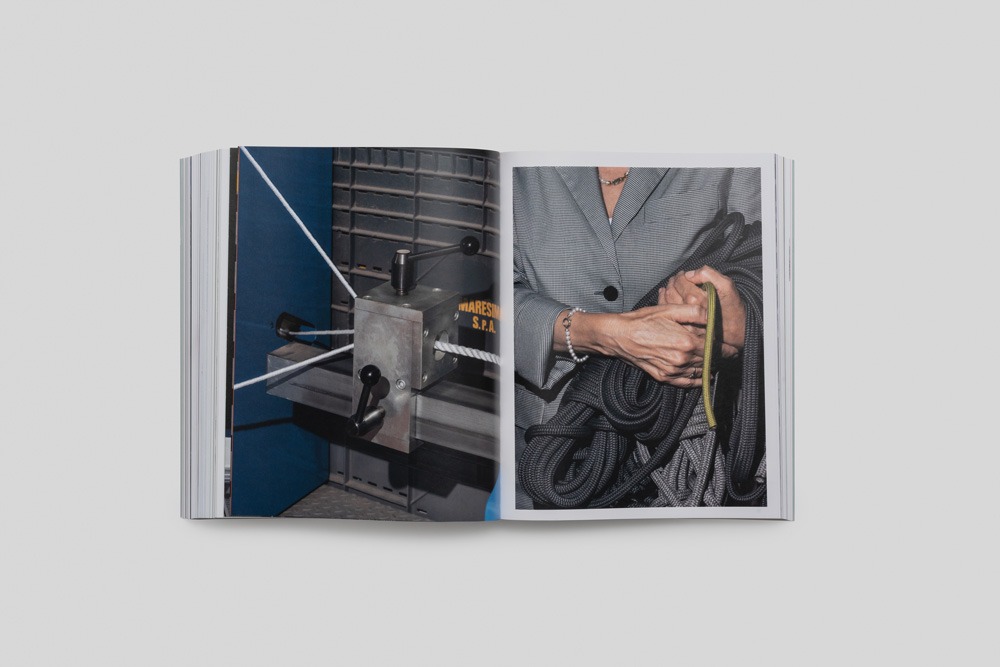In the daily rush, we hardly notice them, even though they are all around us. Maybe it’s because of their omnipresence and the fact that we simply can’t do without them. These inconspicuous everyday heroes literally hold our world together. They are the secret stars in our four walls and in all the other things we use every day. Their versatility is remarkable. They hold and stabilise simply everything, from the most uplifting structures to the smallest objects of daily use.
By Kai Linke
We are talking about connections – the principle of coupling two or more parts together, no matter what form or material. In design, architecture and design, the question arises every day as to how individual things can be joined together. Connections are the answer. But they are not just functional elements. Rather, they unite manifold aesthetic and cultural aspects. They influence the perception of architecture and design and of the world itself.

U-Joints – A Taxonomy of Connections is a non-publishing book uniquely dedicated to the theme of connections. Edited by architect Andrea Caputo and design professor Anniina Koivu, it is a collective project with contributions from a diverse, interdisciplinary group of 120 authors, researchers, designers, architects, artists, photographers and illustrators. The title “U-Joints” stands for “Universal Joints”.
A Necessity with Countless Facets
Connections are not a fad or a new trend. They have always been there, ever since man began to create things and hold them together. Every culture has developed its own techniques, its own individual ways. They are a testimony to human ingenuity and the talent to find solutions. Once you pay conscious attention to them, you suddenly see them everywhere, in different designs and materials. Sometimes they are dynamic, sometimes static. Many are inspired by nature, they can be used once, opened again and again, reused, they can be used to repair or even plan anew. They work in the background and keep our world running.
The idea of the book goes back to an international research project and exhibition series on the topic of connections in design and architecture that has been ongoing since 2018: it began with a small spontaneous exhibition at the Salone de Mobile in Milan, 5 years later a comprehensive work with 943 pages has emerged. With its special view and the expertise gathered in it, it is more than an exhibition catalogue or a mere enumeration of connection methods.

A Refreshing Richness of Material
The book is surprising in its diversity and depth. The six book chapters present a wide range of joining solutions divided into main and subcategories: mechanical joints, timber joints, knots and meshes, adhesives and sealing materials, and welded and fused joints. At the beginning of a chapter, a taxonomy explains basic principles and mechanisms, followed by a comprehensive overview of possible applications. The spectrum ranges from the most common to the rarest compounds, includes the unexpected as well as the highly advanced. With this analytical approach, 1,300 compounds are described, identified, defined and classified. Reading it, one is pleased to finally learn the technical terms of known and unknown compounds and to be able to call them by name. For example, do you have a picture in mind of the pelican hook, the dovetail slot and tenon joint, the Jacquard weave, the pentalob screw, 4-D printing or the transglutaminase glue?
An impressive and refreshing collection of essays, interviews, commentaries, anecdotes and photo studies accompanies each chapter. Various examples from architectural history and contemporary projects are presented to illustrate the potential for application. By interweaving cultural, social and artistic narratives, the book succeeds in capturing the social dynamics associated with the application and development of U-Joints. The presentation combines scientificity with a visually appealing form. This underlines the fascinating multi-faceted nature of the subject and brings it to life as you read.

Tradition and Versatility
The cultural significance of connections in different cultures is discussed, for example, using furniture, lighting and other design products. It will be shown how connections have been used in different cultural traditions and still serve as inspiration for contemporary designers today.
For example, Japanese architect Kengo Kuma tells how the mythology and aesthetics of Japanese craft connections have influenced his architectural language and way of thinking. Kuma’s projects start and end with 1:1 models. They are an important subject of his work, in which the study and development of connections forms a fundamental component, fuelled by a high degree of experimentation in terms of technique and material. Historically, Kuma sees traditional Japanese wooden buildings as the epitome of flexible construction. Their interiors can be changed much more easily than modern concrete or metal structures. Thanks to flexible connection systems, the rooms adapt to the functions and lifestyles of the occupants – a concept that, according to Kuma, can be easily transferred to today’s planning.
Thus, the book U-Joints edited by Andrea Caputo and Anniina Kaivu proves to be a comprehensive guide for architects and designers interested in connections. The journey the authors take us on encourages us to look more closely at the “heroes of everyday life”, to discover and appreciate them. Definitely a book that practitioners of architecture and design should have in their library, as it helps them to find the right connection solution for upcoming projects, to understand it and to use it creatively in their own designs.

U-Joints
Andreas Caputo and Anniina Koivu
ISBN 979-12-210-0342-0
Publisher SYNC-SYNC Editions
943 pages, 21 x 29 cm, ? kg
More on ndion
More reviews.
Share this page on social media:

